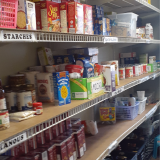We Are River People, Missouri
Story Narrative:
Introduction:
Twenty students from St. Joseph, Missouri, participated in educational programming surrounding the Museum on Main Street exhibition Water/Ways. Activities included a Missouri River cruise led by the Missouri Department of Conservation, touring water gardens and exhibitions, and speaking with staff from the Army Corps of Engineers, Missouri American Water, and the City of St. Joseph Wastewater Division. The St. Joseph Museum then held video editing workshops, culminating in a handful of students creating this short film, exploring the history of St. Joseph and the people of St. Joseph’s close connection to the water.
Media Files:
-
Watch St. Joseph's story (includes open captions).
-
Audio version of St. Joseph's story.



